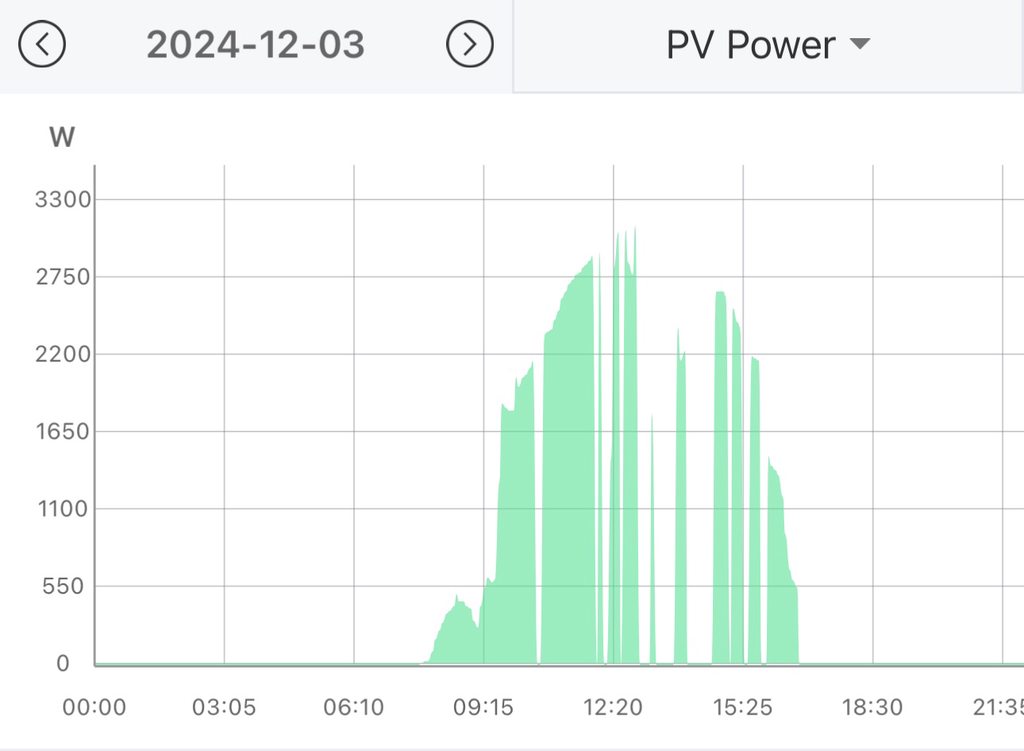Hi all,
I have been getting the above message whenever the grid voltage goes above 253 V (now 257 V)
A bit of context:
Inverter is a Growatt MIN 3600TL-XE (no battery)
4kW/h worth of solar panels.
Our home load is usually pretty low and most of the energy is exported to the grid.
Whenever the solar generation reaches around 2.7kW/h or above, the grid voltage tends to go above 250V, which makes the inverter shut down for 180 seconds before starting back up.
I have increased the over voltage limit on the ShinePhone app up to 257 V but it keeps shutting down. I started with 1 V increments starting from the default 253 V limit.
Attached is a graph of an average day, where generation goes up until the system shuts down. I have read the inverter manual and it states that the inverter can work at up to 276 V, however I am unsure if it is safe to keep increasing the over voltage limit.
